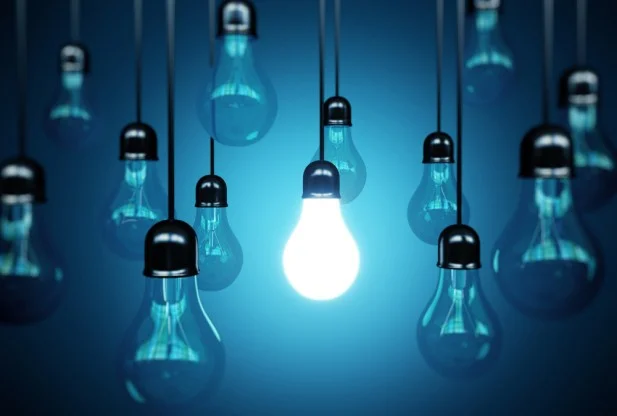The story of Joris Vork's practice. Discover how physiotherapy and osteopathy can team up for optimal patient care.
As a physiotherapist, you might have noticed that osteopaths have become indispensable in modern-day healthcare. In fact, in many European countries, osteopathy is a legally accredited holistic therapy approach, gaining followers and fans by the day.
However, the role of an osteopath and how they can contribute to a patient’s treatment might not always be clear to every physiotherapist. This is a missed opportunity because, by joining forces, physiotherapists and osteopaths can help their patients even better.
We spoke with Joris Vork, a former physiotherapist turned osteopath who is eager to share his holistic vision of osteopathy. Joris enthusiastically offered valuable insights and practical tips on how physiotherapists and osteopaths can work together even better.
From physiotherapist to osteopath
In 2015, Joris proudly received his physiotherapy diploma and promptly began his career in a private practice. Although he was driven to specialise, the available physiotherapy specialities did not meet Joris’ expectations. However, his interest in osteopathy grew, and in 2016, he started his osteopathy training in Zeist, close to Utrecht. Joris aims to learn as many hands-on techniques as possible and gain even more profound knowledge about the human body. In 2020, he graduated and opened his osteopathy practice in the Southern Netherlands.
Why did you choose osteopathy?
"As a physiotherapist, my view on the human body was, by default, quite region-specific. On the contrary, osteopaths look at the human body and its systems more broadly and holistically, focusing on restoring loss of motion and eliminating its associated complaints. While other disciplines primarily focus on joints, capsules, and muscles, osteopathy also treats the mobility of visceral, neurological, and vascular systems. These systems significantly impact a patient’s mobility and are often the cause of persistent complaints in the musculoskeletal system.
Let’s take a look at bladder or uterine problems, for example. Such problems can lead to sacroiliac issues that a physiotherapist treats as an SI problem. However, these sacroiliac issues can eventually become insoluble due to problems in the patient’s fascia and blood flow. Thanks to the broader approach of an osteopath, I can treat the entire region. It gives me great satisfaction to relieve or even eliminate my patients' complaints in this way. Just like it gives me great pleasure that I, as an osteopath, can mean something for patients with chronic complaints who find no solution elsewhere."
What does an osteopath do exactly?
"As an osteopath, I examine and treat people with complaints of the musculoskeletal system. I engage multiple systems, such as muscles, joints, nerves, organs, blood vessels, metabolism, and embryonic development. Additionally, I play a part in prevention and trauma care by supporting the body during recovery. I also consider aspects like lifestyle and the psyche, as they’re two important aspects with considerable influence on physical complaints."
What do osteopathy and physiotherapy have in common? How do these professions complement each other?
"The musculoskeletal part is the same for both physiotherapists and osteopaths, but because we work in different systems, the conclusions we draw and what we subsequently do with them can differ. Therefore, we can complement each other very well. Where physiotherapists increasingly use a hands-off approach, we work 100% hands-on. Osteopaths strive to improve tissue quality, after which the physiotherapist can guide the patient in increasing load capacity. We are often considered competitors of physiotherapists, but the opposite is true. After an osteopath has created the prerequisites for recovery, the patient usually returns to their physiotherapist for further support."
Do you think you can offer more as an osteopath with a background in physiotherapy than osteopaths without that background?
"I believe that the manual skills you develop as a physiotherapist absolutely add value to the work in osteopathy. In both professions, it is important to palpate well; you only learn that by touching as many patients as possible. As an osteopath, you also deal with a challenging audience, so experience as a physiotherapist is an advantage. Moreover, advising your patients works better when you are older and have gained more (life) experience. The same goes for dealing with the psychological aspects of a treatment."
What are your thoughts on multidisciplinary collaboration?
"I find collaborating with doctors important, but I also see great value in close cooperation between osteopathy, physiotherapy, dietetics, and psychology. These four disciplines go hand in hand, and they should know how they can support each other during the different stages of treatment. I would love to see a more intensive multidisciplinary collaboration because it adds to the quality of care. That's exactly why I have established my practice within the walls of a multidisciplinary clinic, allowing me to work closely with other disciplines."
What do you consider necessary for the future of your profession?
"In the Netherlands, osteopathy is considered as alternative care, but I believe it definitely belongs in a regular care pathway. However, scientifically proving the effect of osteopathy takes a lot of work. When researching physiotherapy techniques for back pain, you can test one or two techniques on patients in an experimental and a control group and then compare the results. Due to our holistic vision and the many different treatment options available, this is much more difficult in osteopathy. Moreover, scientific research into osteopathy needs to be more investigated. Fortunately, more studies are being conducted in countries like Italy and Spain, where osteopathy is a university degree.
Additionally, I’ve noticed that (para)medical professionals often don’t quite know what an osteopath precisely does. And because they don't know, they don't see the added value we can provide. It would be great if our profession became more well-known. Being included in the regular care pathway would help, as it helps distribute patients better and gives everyone involved a better idea of what we can mean for each other."



